
FORT WEAVER
EWA BEACH AREA - WWII
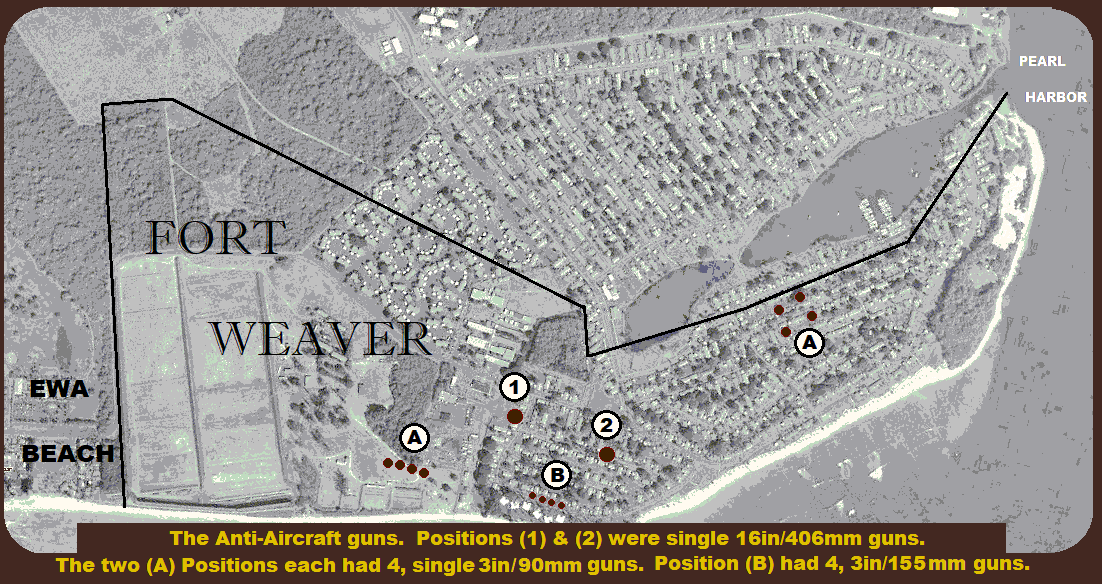
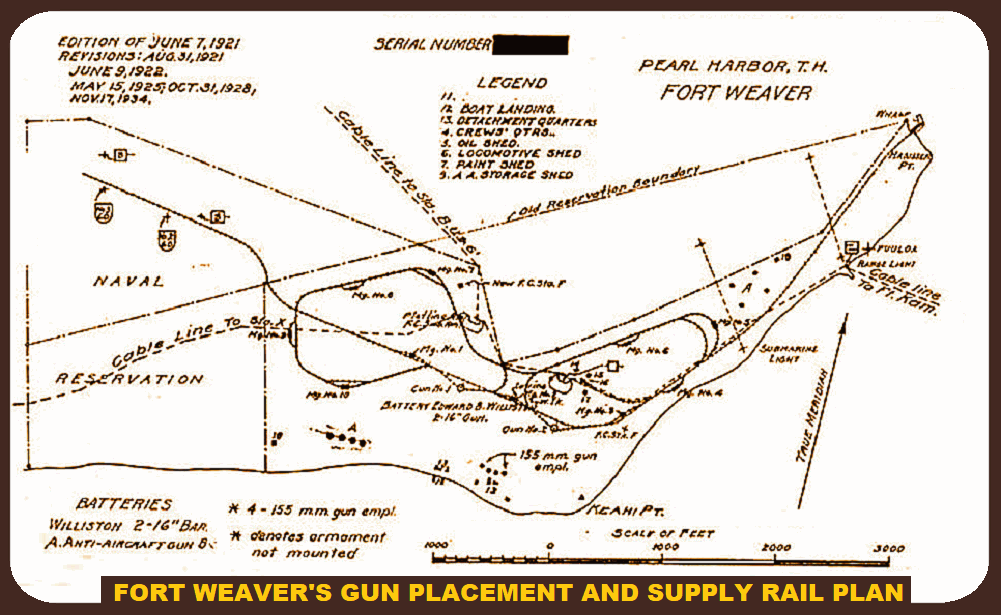
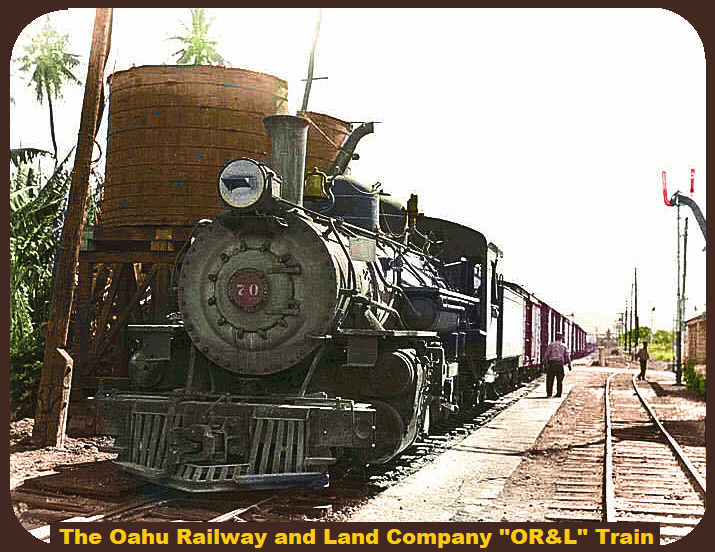
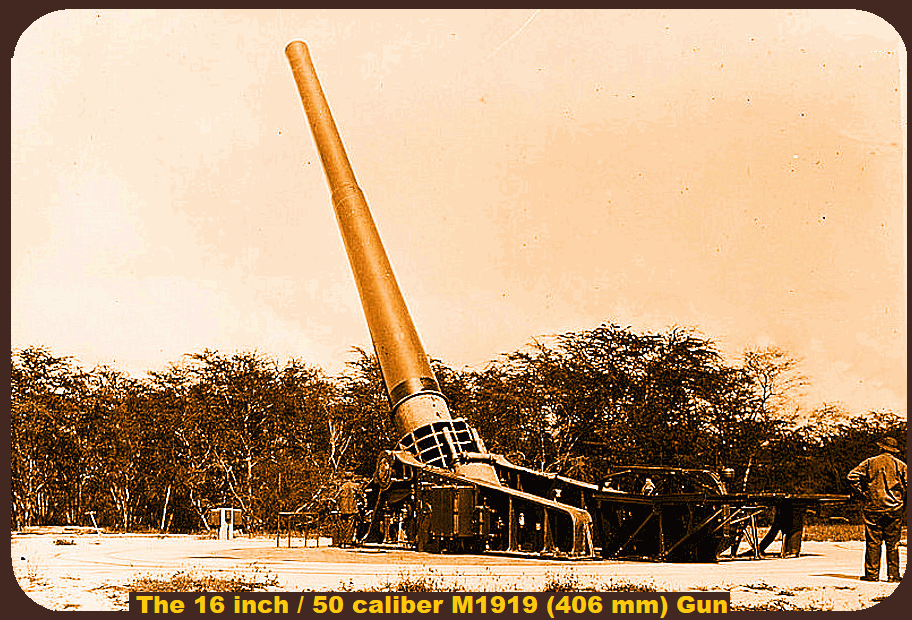
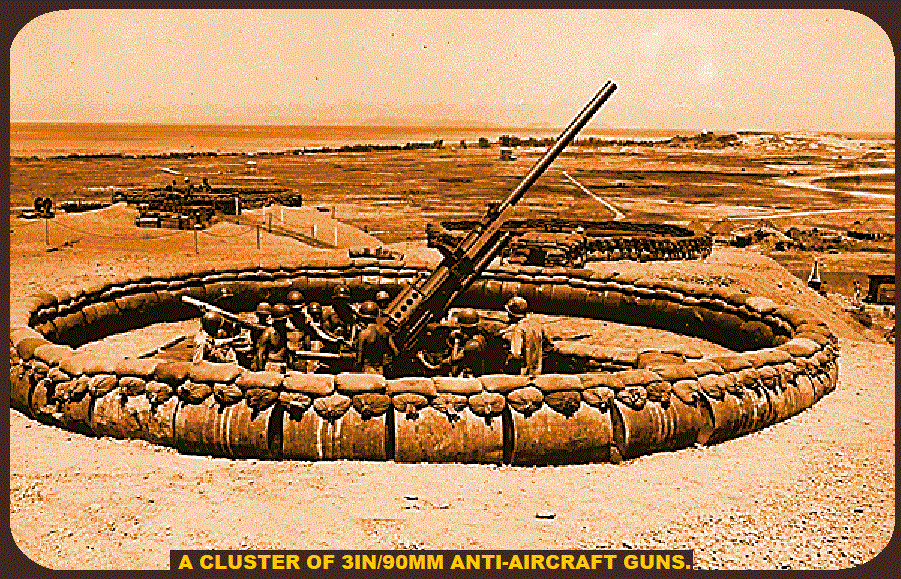
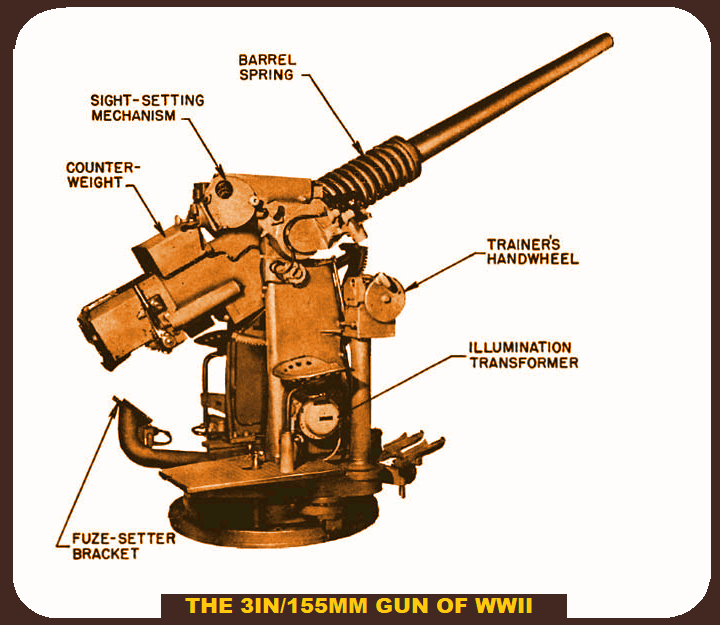


Fort Weaver is located on Iroquois Point, west of the entrance to Pearl Harbor .
The name "IROQUOIS POINT" was derived from the name of two U.S. Navy ships named USS Iroquois.
The name "IROQUOIS POINT" was derived from the name of two U.S. Navy ships named USS Iroquois.
Fort Weaver's gun placements during the Pearl Harbor attack had
TWO single 16-inch 406mm guns placed in 1921.
These were all round fire (ARF) guns emplaced in the open on circular concrete pads.
They were mounted on M1919 long range carriages that elevated to 35 degrees for maximum range.
TWO single 16-inch 406mm guns placed in 1921.
These were all round fire (ARF) guns emplaced in the open on circular concrete pads.
They were mounted on M1919 long range carriages that elevated to 35 degrees for maximum range.
The two four-gun 3-inch 90mm AA batteries were built in 1927.
One four-gun 3-inch 155mm AA battery were built in 1934.
They were on mobile carriages emplaced on fixed concrete Panama mounts.
In the Pearl Harbor Area; Marines manned three batteries of 3-inch 155mm AA guns
when the Japanese attacked in 1941.
This area was developed for housing in the 1950's, adjacent to the present-day USMC Puuloa Rifle Range.
They were on mobile carriages emplaced on fixed concrete Panama mounts.
In the Pearl Harbor Area; Marines manned three batteries of 3-inch 155mm AA guns
when the Japanese attacked in 1941.
This area was developed for housing in the 1950's, adjacent to the present-day USMC Puuloa Rifle Range.
16"/50 caliber M1919 gun
The 16 inch Gun M1919
(406 mm) was a large
coastal artillery piece
installed to defend
the United States
major seaports
between 1920 and 1946.
It was operated
by the United States
Army Coast Artillery Corps.
Only a small number
were produced and
only seven were mounted.
The 16 inch Gun M1919
(406 mm) was a large
coastal artillery piece
installed to defend
the United States
major seaports
between 1920 and 1946.
It was operated
by the United States
Army Coast Artillery Corps.
Only a small number
were produced and
only seven were mounted.
A highly specialized railroad was built
at Forts Weaver to serve
the 16-inch gun batteries.
With the advent of World War II, the Army,
short on equipment, continued to depend heavily
on the Oahu Railway and Land Company system.
The system was extensive, as it not only served the fort proper but also distant ammunition magazines.
The fort's railroad was also connected to
the OR&L main line, and the huge gun
barrels and other components were delivered
to the site by the OR&L.
at Forts Weaver to serve
the 16-inch gun batteries.
With the advent of World War II, the Army,
short on equipment, continued to depend heavily
on the Oahu Railway and Land Company system.
The system was extensive, as it not only served the fort proper but also distant ammunition magazines.
The fort's railroad was also connected to
the OR&L main line, and the huge gun
barrels and other components were delivered
to the site by the OR&L.
I.E. THE 3 INCH 50
The 90-mm Gun is an
American heavy anti-aircraft gun.
It had a 3.5 in (90 mm) diameter
bore, and a 15 ft (4.6 m) barrel.
It was capable of firing a
3.5 in × 23.6 in (90 mm × 600 mm)
shell 62,474 ft horizontally,
or a maximum altitude of 43,500 ft,
90mm can pierce 9 inches of
armor at 1,000 yards with
ammunition APFSDS
American heavy anti-aircraft gun.
It had a 3.5 in (90 mm) diameter
bore, and a 15 ft (4.6 m) barrel.
It was capable of firing a
3.5 in × 23.6 in (90 mm × 600 mm)
shell 62,474 ft horizontally,
or a maximum altitude of 43,500 ft,
90mm can pierce 9 inches of
armor at 1,000 yards with
ammunition APFSDS
The Term 3in/50 Caliber Gun indicates
the gun fired a projectile 3 inches
in diameter, and the barrel
was 50 calibers long.
the gun fired a projectile 3 inches
in diameter, and the barrel
was 50 calibers long.
General Walter Short, responsible for
the defense installations in Hawaii
at the time of the Pear Harbor attack;
had 109 50 caliber machine guns on hand.
The 3in/50's were the most effective
weapon against planes
coming in low over water.
Only four of the army's anti-aircraft
batteries ever opened fired
on the Japanese.
The battery at Fort Weaver began
to fire 35 minutes after the raid started.
the defense installations in Hawaii
at the time of the Pear Harbor attack;
had 109 50 caliber machine guns on hand.
The 3in/50's were the most effective
weapon against planes
coming in low over water.
Only four of the army's anti-aircraft
batteries ever opened fired
on the Japanese.
The battery at Fort Weaver began
to fire 35 minutes after the raid started.
One statment can be made.
There were Search Lights!
There were Search Lights!










